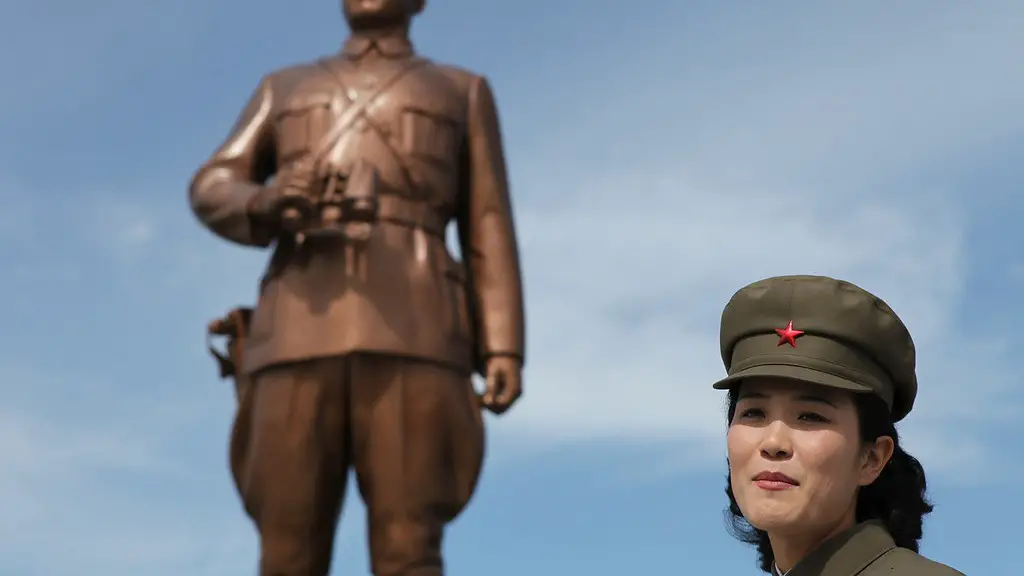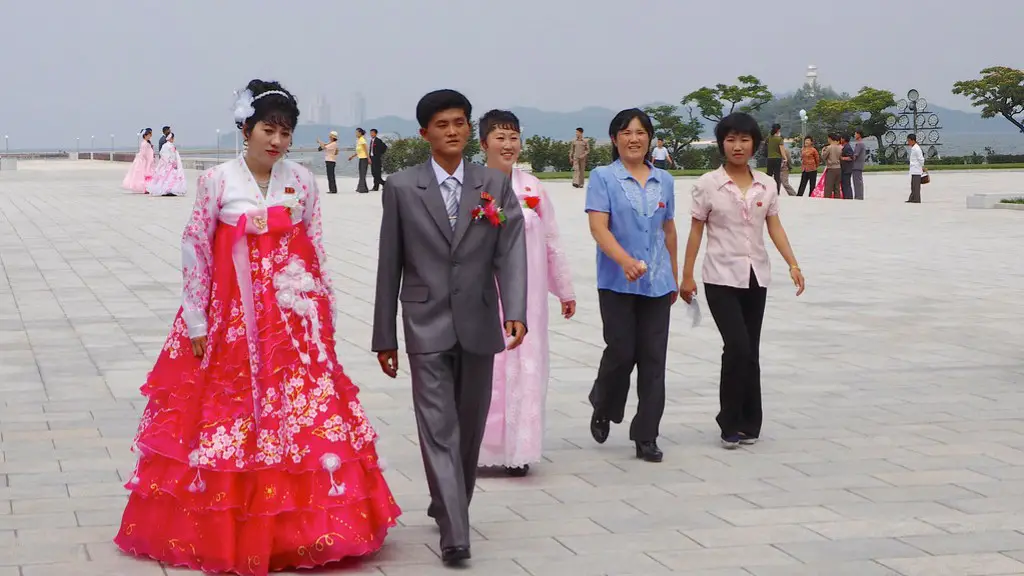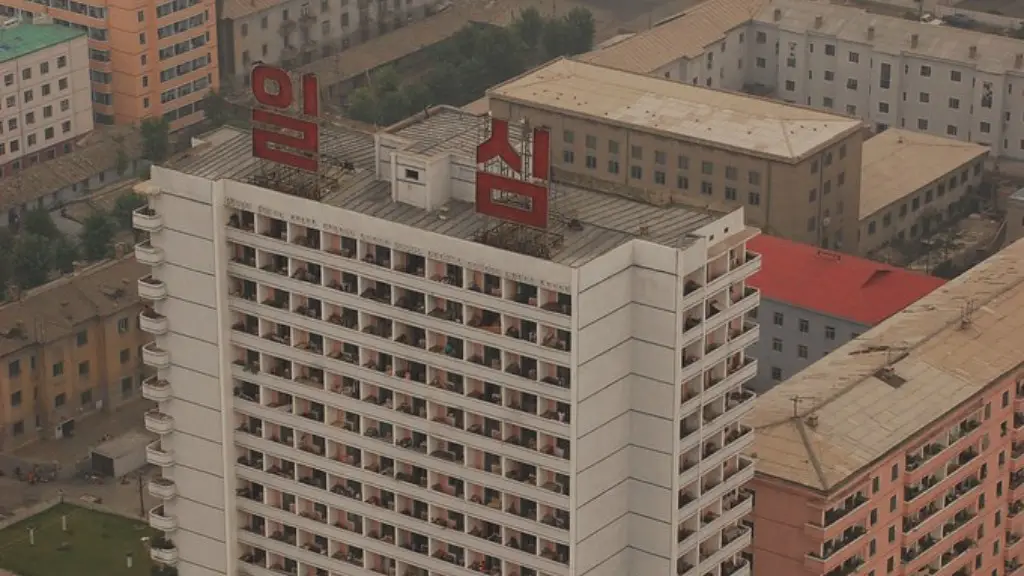In 1945, Korea was liberated from Japanese rule, with Soviet forces pushing out the Japanese from the north and US forces liberating the south, leading eventually to the hastily drawn border splitting the country into two. Since then, the two nations have endured an strained relationship, an often violent divide that is only now beginning to be reconciled in earnest. But why did the south and north Korea split?
When World War II ended, the Allies initially agreed to leave Korea as one unified country. But the Soviet Union soon began to push hard for a separate Communist state in the north, while the United States wanted Korea to be unified, independent, and democratic. In 1948, the Soviet Union and the United States both installed separate governments. The only difference is that the United States-controlled South Korea was a democracy, while the Soviet-controlled North Korea was a single-party Communist state.
The tensions between the two sides worsened dramatically in 1950 when North Korea invaded the South with the backing of the USSR and China. This marked the beginning of the Korean War, during which 2.5 million people died. While the Korean War eventually ended in a stalemate, the border that separated the two sides, the 38th parallel, became the so-called Demilitarized Zone (DMZ) between North and South Korea.
Since the end of the Korean War, the Korean Peninsula has remained divided. Both North and South Korea have maintained fiercely independent and separate identities, with the two nations having differing governmental systems, economic policies, and cultural beliefs. South Korea, with its democracy and market economy, enjoys a prosperous living standard and has forged ahead of its northern neighbor economically, while North Korea has struggled to survive in isolation. The divergence between North and South Korea has been further underscored by North Korea’s development of nuclear weapons, which has made it a major international security concern.
Unsurprisingly, the strained relations between North and South Korea have disrupted efforts to reunify the peninsula. North Korea’s fear of outside influence and techniques of repression continue to prevent any potential reunification. Moreover, South Koreans’ attitudes have shifted in recent years, with a majority of South Koreans now favoring maintaining the status quo due to the economic and political differences between the two states. The same sentiment is also shared by many North Koreans.
The recent thaw in relations between the two sides, however, has raised hopes for improved ties and eventual reunification. In April 2018, North and South Korea held their first summit since the Korean War, with North Korean leader Kim Jong-un walking over the border to meet with South Korean president Moon Jae-in. The two leaders agreed to work towards peace and the eventual reunification of the Korean Peninsula, and in October 2018, the two countries agreed to remove landmines and guard posts along the DMZ, a step towards authentic peace.
while North and South Korea are still not completely unified, the recent developments are a necessary and welcome first step towards reunification. Leaders on both sides have expressed their commitment to pursuing a peaceful path towards reunification and have made it clear that they are committed to building a better future for the Korean people.
Economic Challenges To Reunification
As North and South Korea continue to strive towards unification, there are some economic challenges that lie ahead. For one, the economic disparity between South and North Korea is wide. South Korea has had six decades of democratic, market-driven economic progress, while North Korea has had an economy plagued by sanctions, isolation, and repression. This has led to a wide gap in the economic wellbeing of the two countries, with South Korea’s per capita GDP being 23 times greater than North Korea’s. This economic disparity between the two countries poses a significant challenge for any potential reunification.
Moreover, the economic costs of unification would be significant. According to a 2018 announcement by the Bank of Korea, the South Korean economy may need to spend up to $300 billion in aid to North Korea over the next 20 years once Korea is unified. This would cost the South an estimated 5-20% of its annual GDP, making the cost of unification financially daunting. Thus, there is an economic hurdle that must be overcome if the Koreas are to be reunited.
Despite these difficulty, both North and South Korea are optimistic that they can work together to overcome the economic challenges. In April 2018, the two countries agreed to an accord in which they pledged to increase economic cooperation and expand collaboration. This includes the establishment of an industrial complex in the Demilitarized Zone, the implementation of joint economic projects, and increased investment from both sides in various sectors. These measures are designed to help both countries close the economic gap between them and prepare for eventual reunification.
The Role Of The US and China
The role of outside powers, such as the United States and China, is also an important factor to consider in the push for unification of North and South Korea. The United States has been a crucial partner in the peace process. The US has provided support to South Korea militarily, economically, and diplomatically since the end of the Korean War and remains an important player in pushing for a peaceful reunification. US President Donald Trump has also played an important role in diplomatic efforts, meeting with North Korean leader Kim Jong-un to discuss denuclearization of the border. The US has also supported economic projects for Korean reunification, such as the Kaesong Industrial Complex which was jointly run by North and South Korea until it was closed in 2016.
China is also increasingly playing a role in efforts to reunify the Korean Peninsula. China has always had close ties with North Korea, and it is believed that China has an important influence over North Korean decisions. China was also an active participant in the 2018 negotiations between North and South Korea, and has called for an end to confrontation between the two sides. Additionally, China has reassured North Korea on several occasions that it is committed to the peace process and is opposed to any military conflict between the two Koreas.
The push to reunify North and South Korea ultimately requires support from both the US and China. The US and China both must be willing to help facilitate the process and provide aid to both North and South to ensure that the peace process continues with minimal disruption. Ultimately, the success of a unified Korean Peninsula depends on all parties working together peacefully to reconcile their differences and create a peaceful and prosperous future.
Political and Regulatory Hurdles To Reunification
Achieving a successful reunification also depends on overcoming a number of political and regulatory hurdles. North and South Korea have long been divided by starkly divergent ideologies. Moreover, the two nations have vastly different laws and regulations. The South is a democracy, while the North continues to be an oppressive totalitarian state. Unifying two such countries with extremely different political and regulatory systems presents a daunting task.
Furthermore, in order for unification to occur, North Korea must be willing to open up to the world and accept some reforms to its political and social systems. This could include everything from loosening restrictions on freedom of speech, legalizing opposition political parties, and accepting foreign investment. Such changes would present a huge challenge to any governing leadership, and North Korea would need to be willing to embrace them fully before meaningful reunification could transpire.
In addition to this, the presence of North Korean nuclear weapons presents a major hurdle in reunification efforts. With North Korea continuing to resist calls to denuclearize, and the US and other nations reluctant to commit to the removal of international economic sanctions, the ability to achieve a peaceful reunification becomes more difficult. The leaders of both North and South Korea have vowed to “rid the Korean Peninsula of nuclear weapons and existing threats,” but the continued presence of nuclear weapons impedes efforts to create a unified Korea.
The challenges of unification are great, but that does not mean reunification is impossible. Historical precedents, such as the reunification of German show that with enough determination, even the most difficult challenges can be overcome. Both North and South Korea must keep the faith and work together to overcome the challenge of reunifying the Korean Peninsula.
Conclusion of Outside Conflict
As North and South Korea continue to strive towards reunification, one of the most pressing questions is how the outside world will respond. The presence of American and Chinese forces in the region has been a major source of tension, and it is yet to be seen how things will develop if Korea is reunified. Will the outside powers withdraw their forces, or will they seek to maintain their military presence in the region?
To date, the US and China have expressed their support for peaceful reunification of the two Koreas. The US has pledged to withdraw its troops if and when a peace treaty is concluded, while China has repeatedly said that it does not want to interfere in Korean internal affairs. With the tension between the two sides now beginning to thaw, the outside powers may be more comfortable withdrawing their forces once the two sides reach agreement on a plan for reunification.
That said, however, it remains to be seen if and when the US and China will officially withdraw their forces. It is also unclear what their long-term plans are for the region and how they will influence the reunification process. With North and South Korea taking the lead in the peace process, the final say on whether the outside world will continue to play a role will ultimately lie with them.
The Korean people – The Key To Successful Reunification
At the heart of any successful reunification effort between North and South Korea lies the Korean people. Despite the differences in political and economic systems, the two sides are united by a shared culture and history. This is the foundation on which reunification must be built. Reunification must be based on a shared understanding of the past and common sense of purpose for the future.
This understanding must also be built on shared values and principles. North and South Koreans must be able to look beyond their differences to focus on their similarities and commonalities. This includes shared attitudes on democracy, freedom of expression, human rights, and the rule of law. Only then can the two Koreas hope to achieve a successful, peaceful reunification.
In achieving this understanding, it is important that the cultural and sentimental nature of the reunion be respected and preserved. This means recognizing and appreciating the distinct histories and cultures of both North and South Koreas, rather than striving for homogenization. This is also what will be necessary for true reconciliation between the two sides. If South and North Korea can come together to develop a shared, positive sense of their common identity, then reunification has a chance of success.
The Need For International Support
Reunification of North and South Korea will be a complex and difficult process, and achieving genuine peace will require more than just the efforts of both North and South Koreans. For peace on the Korean Peninsula to be lasting, it will require the support of the international community. This includes the United States, China, and Japan, all of which have been involved in the Korean conflict in different ways and have a vested interest in the region’s stability. These countries are also essential partners in the peace process and must remain engaged in the reunification process.
International support and assistance is also needed to facilitate economic and political reforms in North




